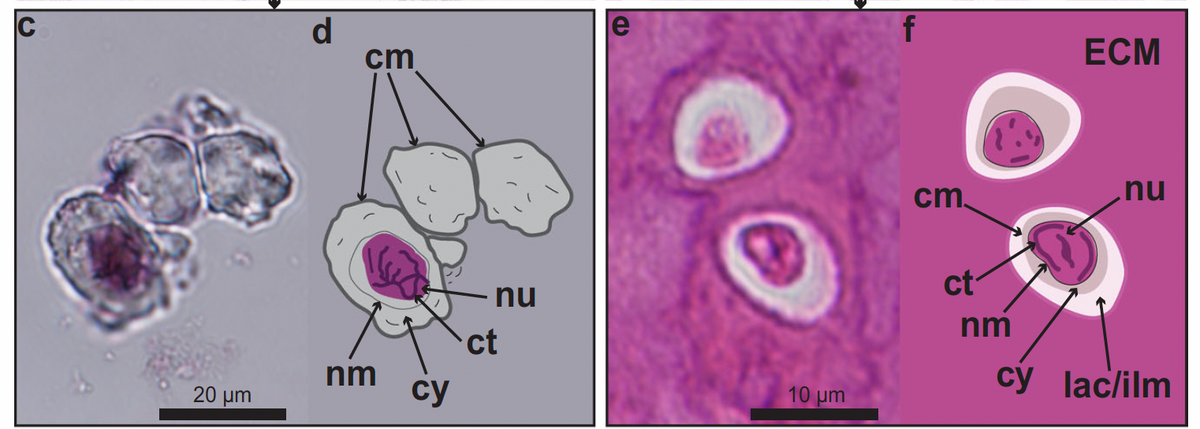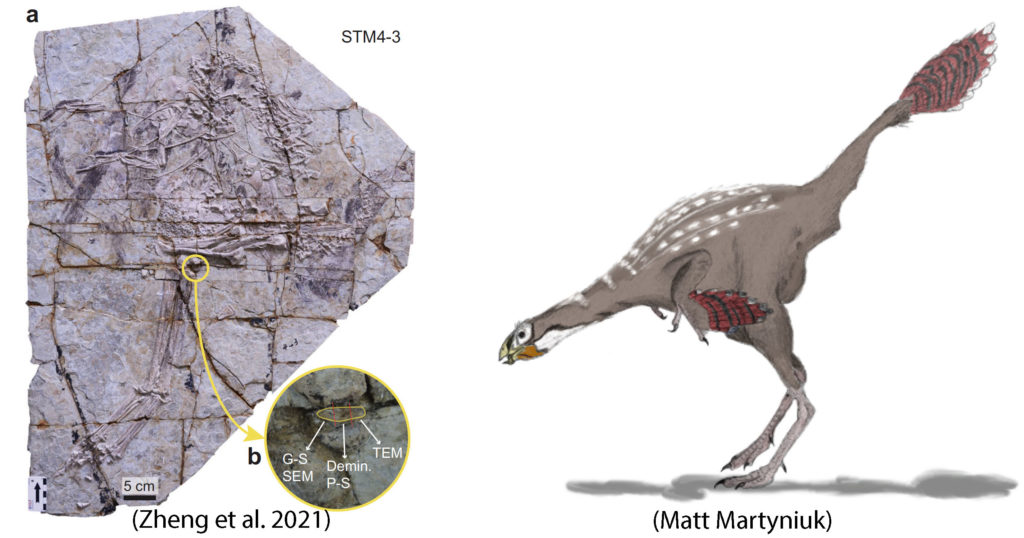Dinosaur DNA!

Last week, a very exciting [paper] was published. Not only did this study show individual cells in a fossil from the Early Cretaceous (133-120 million years ago), but those individual cells show DNA preserved inside!

The fossil in question is a specimen of Caudipteryx, an oviraptorosaurid from the famous Jehol Biota of China. The Jehol Biota comes from a site of exquisite fossil preservation. Many of the specimens that come from there are at least partially complete (the bones are still placed how they would have been in life, or “articulated”).
The authors took a sample from the articular cartilage of the right femur (upper leg bone). Articular cartilage is a layer of softer-than-bone material that protects the ends of the bones from rubbing together where they come together in a joint, like the knee. They divided their sample into 3 sections and used different high-resolution imaging techniques and staining methods to look at the microscopic details inside.
The most impressive result was from their second section. They first dissolved all of the bony material leaving only the softer cartilage behind. Then they cut the piece into thin sections that light can pass through, and stained them. The stain fuses with cell membranes, DNA, and all of the stuff outside of the cell (“extracellular matrix”) in different colors. They did the same thing with a similar piece of a modern chicken bone for comparison.

They found well-preserved ‘chondrocytes’ (the cells that make cartilage), with nuclei inside. The nucleus in a cell is what holds the DNA. Inside the nucleus was darker material, in strands, which the authors describe as chromatin – a form of DNA that’s more condensed than the typical stretched out double helix. They found DNA inside of a dinosaur fossil from ~130 million years ago!
The authors do make it clear that it is unlikely that we will find DNA sequences inside a fossil of this age. The sequences are what make up the instructions for building organisms. So for right now, we (thankfully!) can’t recreate Jurassic Park. But this study shows us that with new imaging techniques, we can learn even more about these ancient organisms.